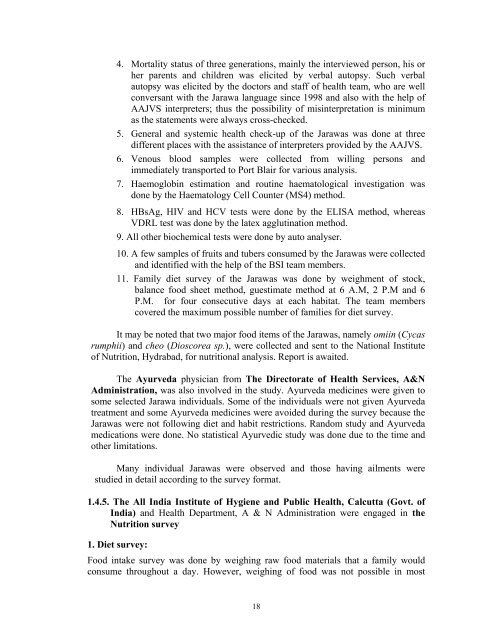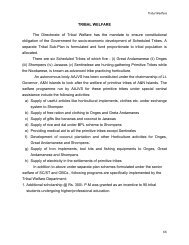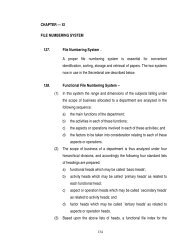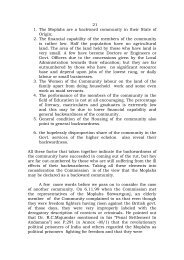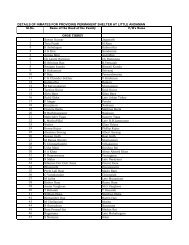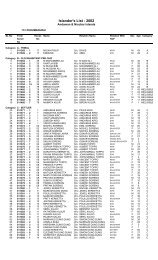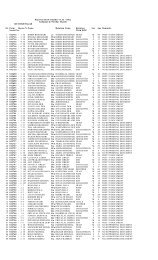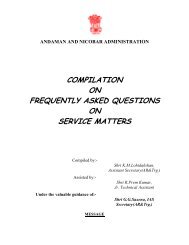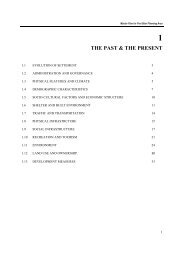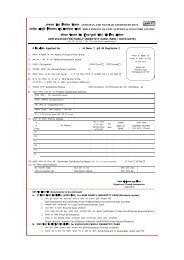1 Introduction - Andaman and Nicobar Islands
1 Introduction - Andaman and Nicobar Islands
1 Introduction - Andaman and Nicobar Islands
You also want an ePaper? Increase the reach of your titles
YUMPU automatically turns print PDFs into web optimized ePapers that Google loves.
4. Mortality status of three generations, mainly the interviewed person, his or<br />
her parents <strong>and</strong> children was elicited by verbal autopsy. Such verbal<br />
autopsy was elicited by the doctors <strong>and</strong> staff of health team, who are well<br />
conversant with the Jarawa language since 1998 <strong>and</strong> also with the help of<br />
AAJVS interpreters; thus the possibility of misinterpretation is minimum<br />
as the statements were always cross-checked.<br />
5. General <strong>and</strong> systemic health check-up of the Jarawas was done at three<br />
different places with the assistance of interpreters provided by the AAJVS.<br />
6. Venous blood samples were collected from willing persons <strong>and</strong><br />
immediately transported to Port Blair for various analysis.<br />
7. Haemoglobin estimation <strong>and</strong> routine haematological investigation was<br />
done by the Haematology Cell Counter (MS4) method.<br />
8. HBsAg, HIV <strong>and</strong> HCV tests were done by the ELISA method, whereas<br />
VDRL test was done by the latex agglutination method.<br />
9. All other biochemical tests were done by auto analyser.<br />
10. A few samples of fruits <strong>and</strong> tubers consumed by the Jarawas were collected<br />
<strong>and</strong> identified with the help of the BSI team members.<br />
11. Family diet survey of the Jarawas was done by weighment of stock,<br />
balance food sheet method, guestimate method at 6 A.M, 2 P.M <strong>and</strong> 6<br />
P.M. for four consecutive days at each habitat. The team members<br />
covered the maximum possible number of families for diet survey.<br />
It may be noted that two major food items of the Jarawas, namely omiin (Cycas<br />
rumphii) <strong>and</strong> cheo (Dioscorea sp.), were collected <strong>and</strong> sent to the National Institute<br />
of Nutrition, Hydrabad, for nutritional analysis. Report is awaited.<br />
The Ayurveda physician from The Directorate of Health Services, A&N<br />
Administration, was also involved in the study. Ayurveda medicines were given to<br />
some selected Jarawa individuals. Some of the individuals were not given Ayurveda<br />
treatment <strong>and</strong> some Ayurveda medicines were avoided during the survey because the<br />
Jarawas were not following diet <strong>and</strong> habit restrictions. R<strong>and</strong>om study <strong>and</strong> Ayurveda<br />
medications were done. No statistical Ayurvedic study was done due to the time <strong>and</strong><br />
other limitations.<br />
Many individual Jarawas were observed <strong>and</strong> those having ailments were<br />
studied in detail according to the survey format.<br />
1.4.5. The All India Institute of Hygiene <strong>and</strong> Public Health, Calcutta (Govt. of<br />
India) <strong>and</strong> Health Department, A & N Administration were engaged in the<br />
Nutrition survey<br />
1. Diet survey:<br />
Food intake survey was done by weighing raw food materials that a family would<br />
consume throughout a day. However, weighing of food was not possible in most<br />
18


